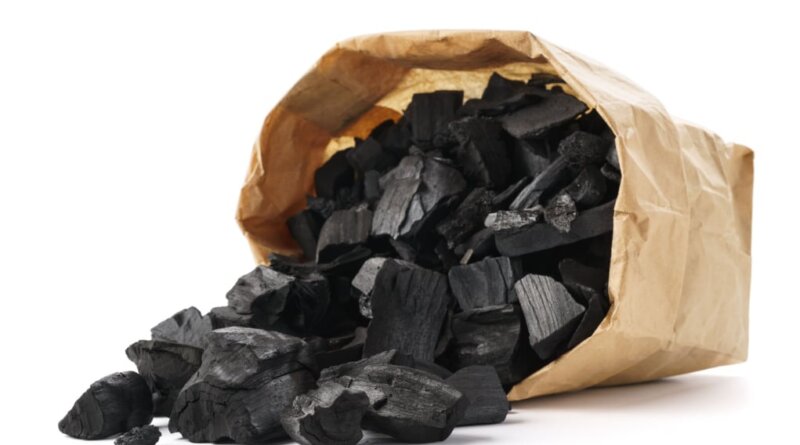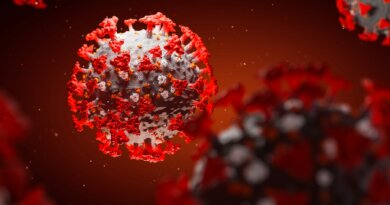My Dog Ate Charcoal: 3 Potential Risks
[ad_1]

Now that the air smells like summer and that barbecue is smokin’ real good in the yard…
It’s probably that time of the year when you find yourself with the same sentiment: “Doctor, my dog ate charcoal again.”
Well, as Dr. Joanna Woodnutt affirms:
“…it’s actually surprisingly common for dogs to eat charcoal.”
It can be a struggle to connect the pieces to why this weird behavior in canines even exists, but science has something to say about this phenomenon. (It’s even weirder!)
So, stay for a while because you’re gonna need to know the whats and whys of dogs eating charcoal and stuff like:
- 3 Risks behind dogs eating charcoal
- What to do when your dogs eat charcoal
- Difference between charcoal and activated charcoal
Without further ado, let’s dig in!

My Dog Ate Charcoal: 3 Potential Risks
Dogs eating charcoal may not be considered poisonous to canines.
It’s good to point out, however, that charcoal-eating shouldn’t be what your dogs are doing, right?
So, pay attention to the following reasons why you should keep your dogs away from these things.
1. Can Cause Burns
Yes, dogs eating on hot charcoal can happen.
Especially when you’re not looking, that appetizing barbecue juice on hot charcoal can attract your pups to munch on it.
This mischievous act can cause burns and secondary wound infection in your dogs in the following parts:
- Gums
- Mouth
- Tongue
- Esophagus
Did you know: Thermal burns caused by fire, steam, hot liquids, and heating devices are the most common factors of pet burns.
Not only do burn injuries lead to partial to complete skin damage, but they can also cause the following conditions in your dogs:
For your reference, here are the 3 burn classifications in pets according to Animal Emergency Care:
|
Type |
Description |
Clinical Signs |
| First-degree (Superficial) | Affecting the outermost skin layer only; easy to heal | Mild skin redness, painful to touch, moist, peeling, or dry skin |
| Second-degree (Partial Thickness) | Affecting deeper skin layers causing blisters and draining; pets are at risk of infection | Visible skin inflammation and swelling |
| Third-degree (Full Thickness) | Affecting all skin layers, including the subcutaneous tissues, bones, muscles, ligaments, and tendons, scars can develop after healing | Brown and leathery skin, hair easily pulls out |
Warning: All skin burn classifications shouldn’t be ignored.
If your dogs get burned with charcoal, rinse the affected area with cool water and quickly call your vet.
2. Contains Fire Accelerants
Charcoals are basically burned wood, but some types can contain hazardous substances like lighter fluid or gasoline.
According to chemical engineer Julie Blanchfield of the Hazardous Materials Standards Division of the US Coast Guard:
“Charcoal is regulated as a hazardous material domestically under 49 CFR 172.101 and internationally under the International Maritime Dangerous Goods Code.”
This combustible material can cause digestive upsets when ingested by your dogs.
Caution: Charcoal inhalation can cause inflammation or damage to the lungs.
3. Causes Intestinal Blockages
Some big chunks of charcoal can potentially cause blockage in your dog’s intestines.
And since charcoals are made out of partially burned wood, it’s literally indigestible, which can make pooping difficult.
While smaller bits can pass through your pup’s system, the bigger ones pose an alarm.
In severe cases, your dogs may need surgery to remove the obstruction.
RELATED: What to Do If Your Dog Is Constipated

My Dog Ate Charcoal: Is It Normal?
Dogs eating charcoal may sound ridiculous, but this weird canine behavior is actually an example of pica.
What is Pica in Dogs?
Pica is the term used for canine consumption of non-food substances.
Besides charcoal-eating, coprophagy or dogs that eat their feces is another common example of pica.
Not only can this become a dilemma for dog parents, but this weird behavior can also be life-threatening, too.
And especially since dogs eat inedible objects, an intestinal blockage is a common aftermath, which is associated with the following symptoms:
Plus, pica in dogs can also cause problems at home.
And in some cases, it can also be a result of an underlying health condition in your pups, too.
Causes of Pica in Dogs
Pica is typically a behavioral issue in dogs.
This weird habit can be a result of the following behavioral factors:
In some cases, dogs think getting rid of the evidence of a chewed sock may help them avoid punishment.
However, pica in dogs can also be due to some medical conditions, such as:
How to Treat and Prevent Pica in Dogs?
In most cases, pica is an uncontrollable behavior occurring in dogs.
If your dogs are healthy and normal, you can follow these recommendations below:
Note: Treatment and prevention must consist of ongoing training and regular visits to the vet for proper behavioral assessment.
My Dog Ate Charcoal: What to Do?
1. Remove Your Dog or the Object From the Area
Get rid of any pieces of charcoal in the area and secure your dogs to a safe spot at home.
If you can still remove the chunks from your pup’s mouth, the better.
But don’t force your dogs to vomit unless supervised by your vet.
Can you perform a Heimlich maneuver on your dogs?
According to James Barr, clinical assistant professor at the Texas A&M College of Veterinary Medicine & Biomedical Sciences:
“Pet owners should perform the Heimlich maneuver on their pet if they believe the pet is choking on something.”
Note: Only perform the Heimlich maneuver if you do not have enough time to visit the vet. Ideally, have your vet on the phone to help walk you through the process.
For small and large canines, here’s a set of instructions for choking dogs:
Heimlich Maneuver for Small Dogs
Method 1
Step 1: Pick up your dog and hold it with its back to your front.
Step 2: Find the soft spot on their abdomen under their ribs.
Step 3: Using the thumb side of your fist, gently thrust inwards and upwards.
Method 2
Step 1: Lay your dog on its back.
Step 2: Find the soft spot on the abdomen under the ribs.
Step 3: Using the heel of your hand, gently press inwards and upwards.
Heimlich Maneuver for Large Dogs
Method 1
Step 1: Stand your dog on its hind legs and hold them like a person with its back to your front.
Step 2: Find the soft spot on the abdomen under the ribs.
Step 3: Using your fist, thrust inwards and upwards.
Method 2
Step 1: Lay your dog on its side.
Step 2: Find the soft spot on its abdomen under the ribs.
Step 3: Supporting your dog from the back, press a fist upwards and inwards toward its spine.
2. Avoid Giving DIY Remedies to Your Fido
Besides water, avoid giving at-home medications to prevent any possible allergic reactions.
Letting your pups take DIY remedies without your vet’s signal can worsen their condition.
3. Let Your Vet Know
Call your vet and let them know all the necessary details of the incident, including how much charcoal your dog might have eaten.

My Dog Ate Charcoal: How to Stop Your Pups From Eating One
Prevention doesn’t have to be like breaking up with your dog, right?
You can still spend time together grilling outdoors by keeping Fido safe and away from the sight of charcoal by doing the following recommendations:
1. Keep Your Dog Entertained by Something Else
You can keep your pooch busy by giving it some chew toys or interactive mini-games while having somebody grill at a safe distance.
Tip: You can try and let a family member or a familiar face dog sit your pooch.
2. Take Advantage of Pet Gates
So, if you’re grilling alone, you can definitely let your dog join you without putting them in danger.
There are pet gates that are suitable for an outdoor setting, too.
This way, it’ll help you supervise your dog and what you’re grilling at the same time.
3. Take Them Out for a Walk Regularly
Another thing is dogs who destructively chew a lot can have behavioral issues, too.
For instance, leaving your pup at home for long periods can let them develop separation anxiety.
My dog, for one, is a destructive chewer despite its humble size.
Especially leaving for days, I usually notice my pup seemingly inactive and not responding to me whenever I call its name.
And to my surprise, I often get bombarded with lots of chewed socks, shoes, and even furniture, too.
So, keeping them happy is vital here.
Regular exercise or morning walks will do the trick.
Plus, have somebody pet-sit or walk your pups while running errands, too.
RELATED: 15 Ways to Prevent Dogs from Chewing Furniture and Your Belongings
My Dog Ate Charcoal: Can Dogs Eat Activated Charcoal?
Dogs can eat activated charcoal. It helps bind toxins in their intestinal tract to prevent absorption in the body.
This black powder can remedy dogs that have ingested poisonous plants or toxic substances.
But despite its absorbent properties, activated charcoal can’t eliminate all toxins.
That’s because compounds such as xylitol and ethanol are too small to bind with the activated charcoal.
Another thing to note is the time or duration of the poisoning.
If too much time has passed after your dog accidentally ingests a toxic material, this remedy may not work.
And chances are, the toxins have already entered your pup’s bloodstream.
Take note, however, to consult your vet before giving activated charcoal to your dogs.
RELATED: 6 Cleaning Products That May Be Poisoning Your Dog
Difference Between Charcoal and Activated Charcoal
|
Details |
Charcoal |
Activated Charcoal |
| Components | Coal, peat, wood pulp, petroleum, and coconut shells | Wood, bamboo, coal, or coconut shells |
| Heat Exposure | Above 400° C (750° F) in an oxygen-less environment | Over 1,000° F, treated with oxygen |
| Characteristics | Highly combustible compound | Highly absorbent, porous |
| Usage | Cooking, heating, fuel source | Absorbs toxins and impurities; used in the medical and cosmetic industry |
My Dog Ate Charcoal: Before You Go…
I can just imagine myself.
If there is even a pet owners’ support group out there, detailing how my dog ate charcoal on a perfect grilling day would give me mixed emotions.
And most pet owners might scratch their heads in unison. This is but a reality of dog parenting, isn’t it?
Well, it sure has its fair share of ups and downs.
But nothing that your pup’s mischievous smile and teasing eyes can’t fix.
So, how is dog parenting going for you so far?
Be sure to let us know in the comments.
And oh, if you found this blog helpful, you might want to check the following recommendations, too!
RELATED READS:
[ad_2]
Source link





